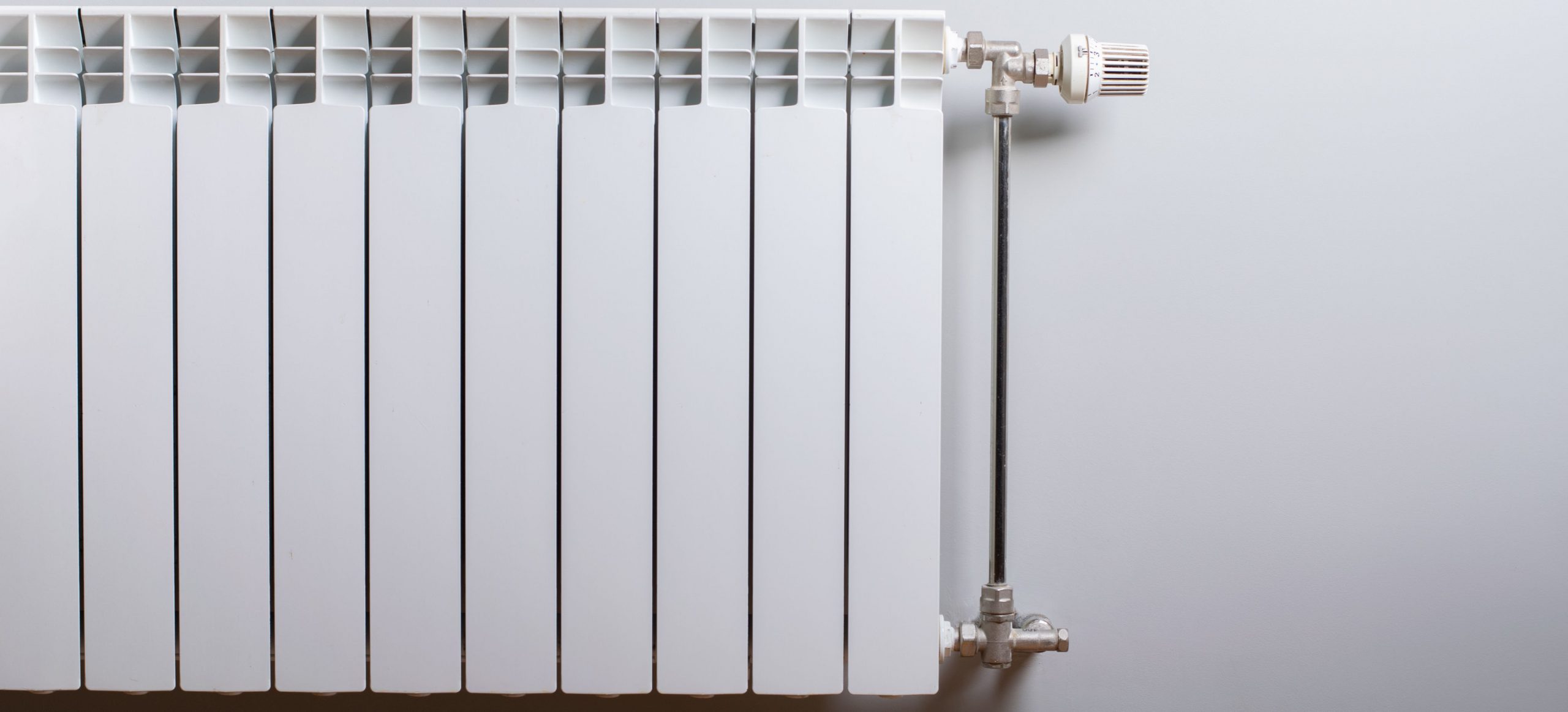Cold Spots On Your Radiator? Here is How to Resolve That Issue

Radiators are essential for keeping your home warm and comfortable, especially during colder months. But if you’ve noticed cold spots on your radiator, whether the radiator is cold at the top, in the middle, or along the bottom – it’s a clear sign that something’s not right with your central heating system.
These radiator cold spots usually occur when water isn’t circulating properly due to trapped air, sludge buildup, or other flow obstructions. Left untreated, this can reduce heating efficiency, spike your energy bills, and eventually damage your boiler.
In this guide, we’ll answer the common question “Why is my radiator cold?”, explore different cold spot patterns, and explain how to fix or prevent them, whether it’s a simple radiator bleed or a full central heating system flush.
- Why are Radiators Cold at the Bottom?
- Why is a Brand New Radiator Cold at the Bottom?
- Why is Your Radiator Cold at the Top?
- Your Radiators are Cold in the Middle?
- Why Is Only One Radiator Cold?
- Why Are Some Radiators Cold and Others Hot?
- Radiators Are Cold Upstairs or Downstairs?
- Radiator Is Still Cold After Bleeding?
- How to Fix a Cold Radiator
Why are Radiators Cold at the Bottom?
Cold spots at the bottom of a radiator are most often caused by a build-up of sludge, rust, limescale, or debris inside the system. This thick mixture settles at the base and blocks hot water from circulating, which leads to poor heat distribution and radiator cold in the middle or bottom. Over time, the sludge build-up can become dense enough to prevent water flow entirely, leaving the bottom half of the radiator cold while the top remains hot.
These radiator cold spots are more than just a comfort issue, they can reduce energy efficiency, increase heating bills, and even strain your boiler or central heating system. If left untreated, this can shorten your system’s lifespan and lead to more serious radiator problems.
The most effective way to fix this issue is by performing a power flushing – a professional cleaning process that removes sludge and mineral deposits from the entire heating system. While DIY radiator flushing is possible, it’s a physically demanding task that requires you to lift the radiator, use special tools, and understand how the radiator valves, inlet/outlet pipes, and heating circuit work. For guaranteed results, we recommend booking a radiator powerflush service with a certified heating engineer, especially if you’re experiencing multiple cold radiators throughout the home.
Why is a Brand New Radiator Cold at the Bottom?
If your brand new radiator is cold at the bottom, it might seem confusing – after all, new radiators shouldn’t have sludge, limescale, or rust build-up yet. However, other radiator performance issues could still be at play, even in newly installed systems.
In many cases, the problem comes down to poor circulation, an airlock, or trapped air within the system. If the radiator hasn’t been bled properly, air can block the flow of hot water, leaving cold spots on the radiator, especially near the base. Another culprit could be a stuck radiator valve, often the thermostatic radiator valve (TRV), which may seize after long periods of inactivity or incorrect installation. In this case, changing your radiator valve might be a quick and effective solution.
Blocked pipework is another common reason, even in new builds, debris or installation errors can restrict water flow and prevent your radiator from heating evenly. Lastly, if your central heating system hasn’t been correctly balanced, radiators furthest from the boiler might receive less hot water pressure, causing cold areas at the bottom.
Regardless of whether the unit is new or old, if your radiator is hot at the top but cold at the bottom, it’s worth scheduling a professional radiator repair service . A certified heating engineer can inspect the system, fix any circulation issues, and ensure your radiator is functioning at full efficiency.
Why is Your Radiator Cold at the Top?
If your radiator is cold at the top but hot at the bottom, the most likely culprit is trapped air inside the system. Since hot water settles at the bottom and air naturally rises, it creates a cold spot on top of the radiator while the lower section remains warm.
This is one of the most common and easily fixable radiator cold spot issues. The solution? You’ll need to bleed the radiator to release the trapped air. Bleeding restores the proper water flow through the radiator, ensuring even heat distribution and eliminating cold patches.
Using a radiator bleed key, you can follow a quick DIY fix – just be sure to protect the floor from any water drips. If you hear gurgling noises or your radiator takes a long time to heat up, these are additional signs that bleeding is required.
Regular bleeding of radiators is also part of routine central heating maintenance and helps extend the lifespan of your heating system while keeping it energy efficient.
Why Is Your Radiator Cold in the Middle?
If your radiator is cold in the middle, yet warm at the top and bottom, it’s usually a sign of sludge buildup or magnetite deposits obstructing the central flow. This internal blockage prevents hot water circulation, causing cold spots in the radiator core and reducing heating efficiency.
This issue is common in older systems or those without proper protection like magnetic filters or central heating inhibitors. Over time, rust, debris, and dirty water accumulate, particularly in the centre of the radiator, creating cold spots that disrupt heat output.
To resolve this, a central heating power flush is highly recommended. This process clears sludge and restores the proper flow of hot water, especially if you’ve noticed vertical cold patches or uneven warmth. In some cases, you may need to remove the radiator and flush it manually outdoors with a hose, especially if a power flush isn’t feasible.
To avoid future issues, consider installing a magnetic filter and using a liquid inhibitor regularly – both of which are designed to prevent sludge buildup and maintain even heating across all radiator panels.
Why Is Only One Radiator Cold?
If only one radiator is cold while the rest of your central heating system is working fine, the issue is likely isolated and not caused by a system-wide fault. One of the most common culprits is a stuck thermostatic radiator valve (TRV). This small pin-based valve can seize up after long periods of inactivity, especially during the warmer months when heating isn’t used.
Start by checking if both the inlet and outlet radiator valves are fully open. If they are and the radiator is still cold, carefully remove the TRV cap and check the pin underneath. If the pin is stuck, gently tap it or use a lubricant spray to free it. If this doesn’t fix the issue, the valve may need to be replaced.
Another possible reason is localised sludge or limescale buildup. Even a new radiator can become blocked if dirty water from the rest of the system flows through it. In this case, a single radiator flush may help, or you might need to remove the radiator and clean it outdoors using a hose and flushing technique.
To avoid this issue long term, consider installing a magnetic system filter and regularly treating your heating with a central heating inhibitor. These maintenance steps help prevent internal blockages and ensure consistent hot water circulation to every radiator.
Why Are Some Radiators Cold and Others Hot?
If some of your radiators are heating up while others stay cold, the problem likely lies in an unbalanced central heating system. Radiators that are closer to the boiler or have more open lockshield valves tend to receive more hot water circulation, leaving others, especially those upstairs or further along the pipework with cold spots.
This uneven distribution causes radiators to be hot at the top but cold elsewhere, or entire units to stay lukewarm. Balancing your radiators ensures the water flow is regulated so that each radiator receives an equal share of heat, which maximises both energy efficiency and comfort.
To fix this, you can manually balance your radiators using a digital thermometer and adjusting the lockshield valves one by one. Start by turning off your system, letting the radiators cool, and then opening each valve slightly based on how quickly each radiator heats up. Radiators that get hot too quickly should be slightly restricted, allowing more heat to reach colder units.
If the issue persists or you’re unsure about how to proceed, it’s best to hire a Gas Safe registered heating engineer to professionally balance your system and ensure optimal heating system performance.
Why Are Radiators Cold Upstairs or Downstairs?
Are your radiators cold upstairs while those downstairs work fine, or vice versa? This type of uneven heating is usually a sign of a system-specific issue. If your upstairs radiators are completely cold, it could point to a problem with the feed and expansion tank in the loft, especially in an open-vented system. A stuck ball valve or dry cistern could prevent the system from refilling properly, stopping hot water circulation to upper floors and leading to cold spots in radiators.
Conversely, if your downstairs radiators are cold, the issue may lie with a failing central heating pump. The pump might not be strong enough to push water down through the system, leaving you with radiator cold spots on the lower level.
In both cases, the root cause can reduce system pressure, increase energy usage, and affect overall heating efficiency. You may also experience cold spots on radiator surfaces or a general drop in indoor comfort levels. These aren’t DIY fixes – contact a Gas Safe registered heating engineer to diagnose and resolve the problem safely and effectively.
How to Fix a Cold Radiator
Now that you understand the main causes behind cold spots on your radiator, it’s time to explore the best ways to fix the issue. Whether your radiator is cold at the top, in the middle, or at the bottom, there are several effective radiator fixes, some of which are DIY-friendly, while others may require a Gas Safe registered engineer.
Below are the most reliable methods for resolving radiator cold spots and restoring full heat output:
Bleed your radiators
One of the simplest and most effective solutions for cold spots in radiators, especially when the radiator is cold at the top – is bleeding. Trapped air is a common culprit that prevents hot water from circulating properly, resulting in poor radiator heat distribution and reduced system efficiency.
Bleeding a radiator releases this trapped air, allowing hot water to fill the radiator completely. This is especially useful when your radiator is hot at the bottom but cold at the top.
How to bleed your radiator:
- Turn off your central heating and let the system cool.
- Use a radiator key to slowly open the bleed valve at the top corner of the radiator.
- Wait until the hissing stops and water begins to escape.
- Close the valve securely and wipe up any drips.
This simple process is ideal for DIY radiator bleeding routine, as it releases the trapped air and allows hot water to fill the radiator completely. It’s especially useful when your radiator is hot at the bottom but cold at the top. However, if you’ve bled your radiator and it’s still not warming up properly, it could signal a deeper issue like sludge build-up, valve problems, or a system pressure fault.
In such cases, consider contacting a Gas Safe engineer for further investigation or explore other fixes like power flushing or radiator balancing.
Perform a Powerflush
If your radiator is cold at the bottom, or you’re dealing with persistent cold spots on radiators, a power flush could be the solution your central heating system needs. Over time, sludge, rust, and limescale can build up inside your radiators and pipework, restricting water flow and reducing efficiency.
A radiator power flush is a deep-cleaning procedure that uses a specialist pump and chemical cleaning agents to clear out sludge, magnetite, and debris from the entire heating system. It restores proper circulation and heat distribution, making your radiators work like new again.
This service is especially recommended:
- If you’ve noticed multiple radiators are cold or heating unevenly
- When installing a new energy-efficient boiler
- If your radiators have been bled but remain cold
- To comply with boiler maintenance and efficiency standards
Although you may be tempted to try DIY solutions, a central heating power flush should always be performed by a Gas Safe registered engineer. Attempting it yourself without proper tools and knowledge can damage your heating system or void your boiler warranty.
We recommend only a licensed specialist to carry out the power flush service at your London property, for your peace of mind.
Balance your radiators
If your radiators have cold spots, heat unevenly, or take too long to warm up, you may be dealing with an unbalanced central heating system. Radiator balancing is a crucial part of system installation and maintenance. When properly balanced, radiators will heat at the same rate, deliver their maximum heat output, and reduce wasted energy, especially in larger homes.
A practical way to monitor radiator performance is by attaching radiator thermometers to each unit and tracking their heat-up times. It’s not uncommon for radiators furthest from the boiler, or those on upper or lower floors to struggle due to uneven water distribution.
To balance your radiators, follow these steps:
- Turn off your heating system and wait at least two hours for everything to cool down.
- Measure the flow temperature at the boiler; it should be at least 20°C higher than the return temperature.
- Measure the return temperature from your radiators; ideally, it should be under 55°C.
- If the temperature difference is less than 20°C or the return temp is above 55°C, your heating system is likely unbalanced.
In that case, it’s best to contact a professional heating engineer. A professional can properly adjust the lockshield valves and ensure that each radiator receives the correct flow rate.
Get a flow diverter installed
If your radiator is cold at the bottom or has uneven heat distribution, installing a flow diverter might be the solution. While not required for every radiator, flow diverters are essential in systems where water circulation isn’t optimal, especially for tall or vertical radiators, or those installed without factory-fitted diverters.
These devices redirect hot water through the entire radiator, ensuring even heating from top to bottom and eliminating cold spots. Without a diverter, water may shortcut through one section, leaving the rest of the unit underheated.
Unfortunately, many new radiator units don’t include diverters by default. Manufacturers may leave them out or claim they’re unnecessary, especially in cheaper models. But in practice, the lack of a diverter often results in poor radiator performance, particularly in energy-efficient or complex heating systems.
If you’ve already tried bleeding, balancing, and even power flushing, but you still notice persistent cold patches – it might be time to consult a heating engineer to check if your radiator needs a diverter.
And if your system has required repeated repairs, noisy radiators, or inconsistent room temperatures, maybe it’s time to remove your radiator and invest in a new unit.
Key Takeaways: Resolving Radiator Cold Spots
To keep your central heating system running efficiently, it’s important to address cold spots on your radiator as soon as they appear. After a new radiator installation, make sure your tradesperson checks each radiator for proper heat distribution. If you notice cold areas developing later, assess where the issue occurs – is the radiator cold at the top, in the middle, or at the bottom?
Some issues, like trapped air or unbalanced flow, can be fixed with basic maintenance, such as bleeding a radiator or adjusting the valves. Others, such as sludge build-up, a faulty radiator valve, or poor circulation may require professional help.
Only attempt DIY radiator repair if you are confident in your skills and understand how your heating system operates.
Otherwise, call a certified Gas Safe registered engineer in the UK if:
- Your radiators stay cold after bleeding or balancing
- Your system needs a central heating power flush
- You’re unsure how to resolve low heating performance
- You suspect a deeper issue with your boiler or circulation pump
Regular servicing, heating system inhibitors, and upgrades like magnetic filters or flow diverters can help prevent cold spots and extend your system’s lifespan.
Cold Spots On Your Radiator? Here is How to Resolve That Issue
Need help? Hire the London Property Service experts today by giving us a call on 020 3078 5920.




